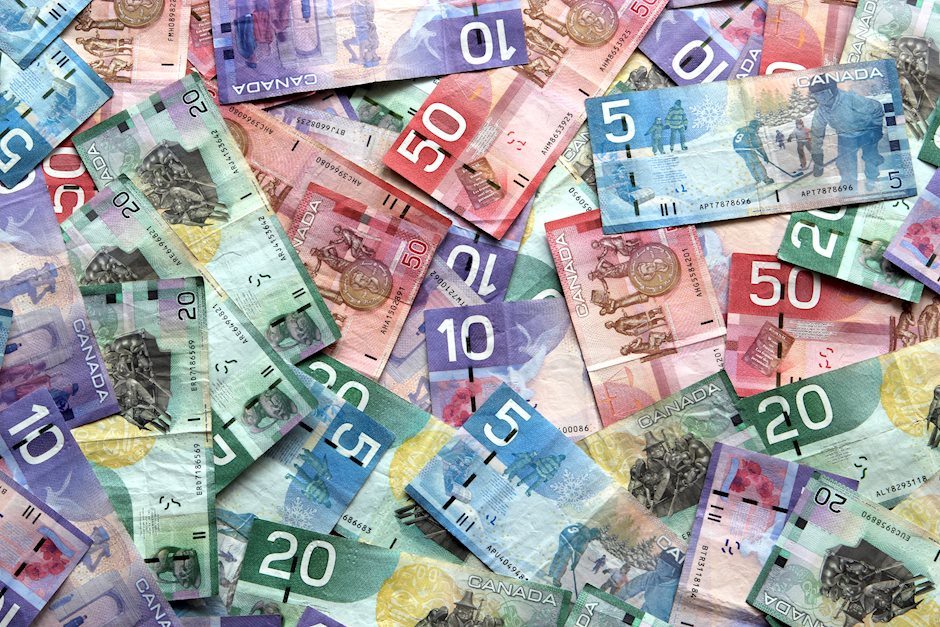USD/CAD Price Forecast: Struggles for firm-footing above 1.3900
- USD/CAD exhibits mild correction after revisiting 1.3950.
- Lower US Initial Jobless Claims and higher private payrolls have signaled an improvement in labor market health.
- Canadian economic growth remained flat in August, as expected.

The USD/CAD pair struggles to establish above the key support of 1.3900 in Thursday’s North American session. A one-sided rally in the Loonie pair appears to have paused, with investors focusing on the United States (US) Nonfarm Payrolls (NFP) data for October, which will be published on Friday.
Canadian Dollar PRICE Last 30 days
The table below shows the percentage change of Canadian Dollar (CAD) against listed major currencies last 30 days. Canadian Dollar was the strongest against the New Zealand Dollar.
| USD | EUR | GBP | JPY | CAD | AUD | NZD | CHF | |
|---|---|---|---|---|---|---|---|---|
| USD | 2.41% | 3.18% | 6.34% | 2.81% | 5.47% | 6.63% | 2.25% | |
| EUR | -2.41% | 0.74% | 3.84% | 0.38% | 2.99% | 4.11% | -0.18% | |
| GBP | -3.18% | -0.74% | 3.09% | -0.36% | 2.22% | 3.36% | -0.89% | |
| JPY | -6.34% | -3.84% | -3.09% | -3.34% | -0.82% | 0.27% | -3.86% | |
| CAD | -2.81% | -0.38% | 0.36% | 3.34% | 2.61% | 3.73% | -0.53% | |
| AUD | -5.47% | -2.99% | -2.22% | 0.82% | -2.61% | 1.10% | -3.08% | |
| NZD | -6.63% | -4.11% | -3.36% | -0.27% | -3.73% | -1.10% | -4.10% | |
| CHF | -2.25% | 0.18% | 0.89% | 3.86% | 0.53% | 3.08% | 4.10% |
The heat map shows percentage changes of major currencies against each other. The base currency is picked from the left column, while the quote currency is picked from the top row. For example, if you pick the Canadian Dollar from the left column and move along the horizontal line to the US Dollar, the percentage change displayed in the box will represent CAD (base)/USD (quote).
Economists expect the economy to have added 113K fresh payrolls, significantly lower than 254K in September. The Unemployment Rate is expected to have remained steady at 4.1%. Investors will pay close attention to the employment data as it will significantly influence market expectations for the Federal Reserve (Fed) interest rate path, given that officials are confident about inflation remaining on track to the bank’s target of 2%.
Meanwhile, a few job-related indicators have pointed to an improvement in labor market conditions. Initial Jobless Claims for the week ending October 25 came in lower at 216K than estimates of 230K. Wednesday’s ADP Employment Change data showed a robust addition of payrolls by the private sector.
In the Canadian region, flat economic performance is expected to keep the Canadian Dollar (CAD) on the backfoot. Statistics Canada reported that the monthly Gross Domestic Product (GDP) was flat in August, as expected. While the economy grew by 0.1% in July. Subdued economic performance is expected to prompt the Bank of Canada (BoC) to cut interest rates again in its monetary policy meeting in December.
USD/CAD faces mild correction after revisiting the two-year high of 1.3950. The near-term outlook of the Loonie pair remains firm as the 20-day-Exponential Moving Average (EMA) near 1.3800 is sloping higher.
The 14-day Relative Strength Index (RSI) takes a breather after turning oversold around 75.00. However, the overall status of the RSI (14) points to a strong bullish momentum.
More upside would appear if the asset breaks above the immediate high of 1.3950. The scenario will pave the way for the psychological resistance of 1.4000 and the round-level resistance of 1.4100.
On the contrary, a downside move below October 29 low of 1.3875 will expose the asset to October 15 high near 1.3840, followed by the round-level figure of 1.3800.
USD/CAD daily chart
Author

Sagar Dua
FXStreet
Sagar Dua is associated with the financial markets from his college days. Along with pursuing post-graduation in Commerce in 2014, he started his markets training with chart analysis.


















